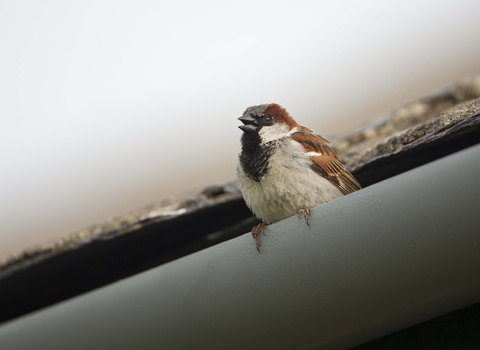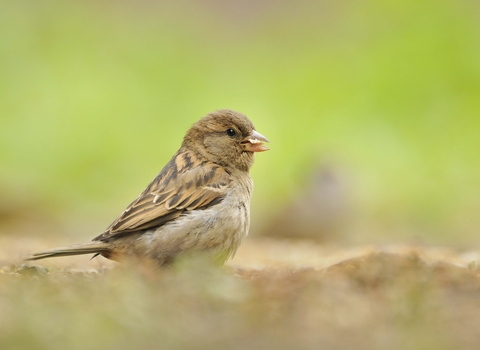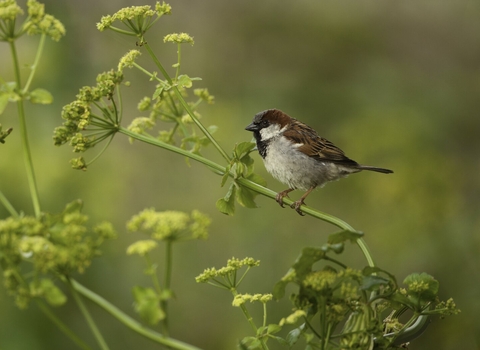
©Mark Hamblin/2020VISION

©Fergus Gill/2020VISION

House sparrow by Mark Hamblin/2020VISION
House sparrow
The house sparrow is a familiar, streaky brown bird of towns, parks and gardens. Males sport a grey cap and black bib, the size of which indicates their status.
Scientific name
Passer domesticusWhen to see
January to DecemberSpecies information
Statistics
Length: 14cmWingspan: 24cm
Weight: 34g
Average lifespan: 3 years
Classified in the UK as Red under the Birds of Conservation Concern 5: the Red List for Birds (2021). Priority Species under the UK Post-2010 Biodiversity Framework.
